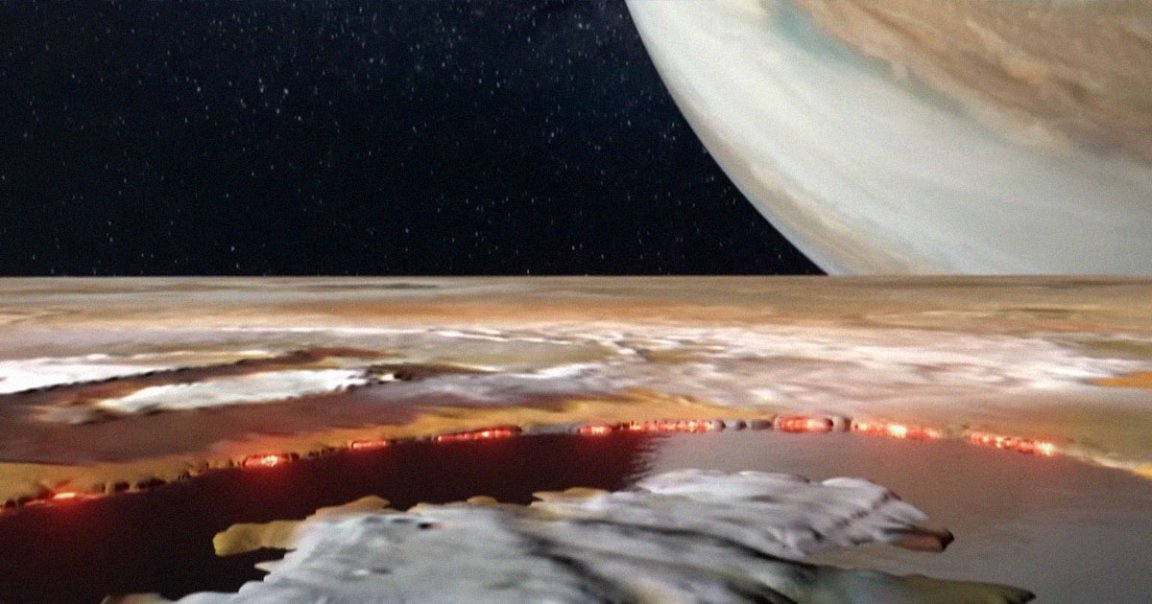
Sittin’ On the Dock of the Bay
NASA just released stunning new artist impressions of an extremely reflective lava lake on the surface of Jupiter’s moon Io.
Released by the space agency’s Jet Propulsion Lab last week, the generated clip isn’t actual footage recorded by a spacecraft. It’s nonetheless a gorgeous rendition of what the view would look like if one were to stand on the shores of the moon’s 124-mile-long Loki Patera, a magma-filled lake dotted with islands.
But it’s not exactly a lakeside holiday destination as we know it back on Earth. The moon’s surface temperatures average a frosty -202 degrees Fahrenheit, while its many volcanoes can reach 3,000 degrees Fahrenheit.

Obsidian Lake
Io orbits Jupiter at a distance of just 217,000 miles above the planet’s cloud tops — which is slightly farther than the distance between the Moon and the Earth.
However, Jupiter’s diameter is roughly 11 times that of the Earth’s, meaning that the gas giant looms in the background if one were to stand on the edge of lake Loki Patera, as seen in NASA’s latest video.
JPL’s animation makes use of data collected by NASA’s Juno spacecraft, which made extremely close fly-bys of the lonely moon in December and February of this year, getting within just 930 miles of its surface.
“Io is simply littered with volcanoes, and we caught a few of them in action,” Juno’s principal investigator Scott Bolton said during an April 16 news conference. “We also got some great close-ups and other data on a 200-kilometer-long (127-mile-long) lava lake called Loki Patera.”
The lake has long intrigued astronomers thanks to its extremely reflective surface. But unlike the bodies of water on Earth, its glinting nature is due to entirely different properties.
“There is amazing detail showing these crazy islands embedded in the middle of a potentially magma lake rimmed with hot lava,” Bolton added. “The specular reflection our instruments recorded of the lake suggests parts of Io’s surface are as smooth as glass, reminiscent of volcanically created obsidian glass on Earth.”
Steeple Chase
Other than a mesmerizing lake, Juno’s observations have also allowed scientists to glean the shape of a highly unusual “Steeple Mountain,” which sharply juts out of the otherwise smooth surface of Io.

The data could shed light on one of the solar system’s biggest mysteries: how Jupiter came to be. Recent Juno observations have supported the theory that water-ice material attracted heavy elements during its formation and evolution.
But many mysteries surrounding the gas giant remain. On May 12, Juno will attempt its 61st flyby of the planet — a tireless effort that has resulted in some dramatic and never-before-seen views.
More on Io: NASA Spacecraft Swoops So Close to Io That It Can See Volcanic Eruptions